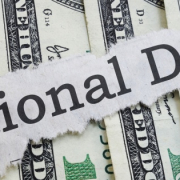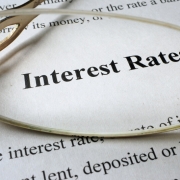The Nightmare Scenario for CRE Bank Loans
A lot of discussion in business and economic circles is around whether 2024 will bring a soft landing or some degree of recession. The optimists have been out in force for some time and are expecting a Federal Reserve rate cut as soon as the first quarter of next year.
But there are still those who think a recession could happen and that victory is far from clear. If that proves to be true, Yale School of Management’s Professor of Finance and Management Andrew Metrick says to prepare for some serious trouble for commercial real estate and the banks that hold the loans.
“Historically, for every one percentage point increase in the policy rate from the Fed, banks take 1% hits to their capital over the next eight quarters,” Metrick said in an interview with Yale Insights. From the zero-interest rate to the current baseline federal funds rate range of 5.25% to 5.50% has been a large and rapid leap. “If banks lose 5% of their capital, there are going to be a lot of banks in trouble.”
“If we manage to avoid a recession and get a soft landing, the banks will recover,” Metrick says. “Past commercial real estate downturns have been slow moving things,” he explained. “We spent 10 years after the global financial crisis working out a whole lot of problems.”
At issue is the deep intertwining of banks and commercial real estate. As Metrick notes, the banking system holds about $3 trillion in CRE loans on their book sheets, $2 trillion of which is held outside the largest 25 financial institutions. To date, the loans have performed because their interest rates have been low. Refinancing is drastically changing that.
If a soft landing skips and slides into a recession, the processing of CRE loans would kick into high gear because banks don’t typically sell them on as they do with residential mortgages. Under a 2016 change in accounting standards called Current Expected Capital Losses (CECL), “banks are supposed to take seriously what they think the probability is of something paying off in the future, even if it’s current,” Metrick says.
His “nightmare scenario” starts with banks as yet having to provision adequately for potential losses. In a recession, banks are even more reluctant to lend into commercial real estate than they have been. Many loans don’t get refinanced, and some bank somewhere becomes the “Silicon Valley Bank of commercial real estate” that suddenly fails. Congress investigates and finds that the bank not only failed to have reserved enough, but also didn’t warn shareholders.
“That next quarter, every accountant in the world is going to tell their banks, ‘I’m not going to be the one blamed if you fail.’ They’re going to get very tough on CECL, and what looked like a slow-moving downturn suddenly crystallizes as an expected value disaster that everybody has to put in their balance sheets at the same time,” Metrick says.
Many banks, maybe hundreds, now become insolvent, creating a wave of closures not seen since the very worst of the Global Financial Crisis.
“Not to leave you super scared, but you should be a little scared because I’m a little scared,” he says.
Source: GlobeSt.











